I have a Bell Sound 2420 amp and I need to replace two multi section can caps, and I really don't know much about them.
one is a 40uF/450v,40uF/450v,20uF/450v
I have found a three section cap that is 40uF/525v,40uF/525v,40uF/525v
would this be a suitable replacement even though the last section is 40uF versus 20?
the other is a 20uF/350v, 20uF/350v, 500uF/25v
I found a 2 section cap: 20uF/450v, 20uF/450v and then would have to put a third cap separate from it as I couldn't find one that had all three.
Does this make sense or am I coming to wrong conclusions?
I had considered wiring separate caps and leaving the cans unconnected, but there just isn't room in the spaghetti nightmare that is the underside of this chassis.
one is a 40uF/450v,40uF/450v,20uF/450v
I have found a three section cap that is 40uF/525v,40uF/525v,40uF/525v
would this be a suitable replacement even though the last section is 40uF versus 20?
the other is a 20uF/350v, 20uF/350v, 500uF/25v
I found a 2 section cap: 20uF/450v, 20uF/450v and then would have to put a third cap separate from it as I couldn't find one that had all three.
Does this make sense or am I coming to wrong conclusions?
I had considered wiring separate caps and leaving the cans unconnected, but there just isn't room in the spaghetti nightmare that is the underside of this chassis.
The replacement capacitors that you have listed are perfectly good to use. A higher voltage rating is ok. A lower voltage would probably not be as good unless the actual applied voltage was even lower. Also the added capacity of 40 verses 20 is perectly ok too because it's not excessively larger. The only other thing to keep in mind is the physical size and height of the new can. This is only important if you are confined inside a cramped cabinet of come kind where headroom is close.
As the previous poster said: Higher rated voltage is fine (might even lengthen capacitor life) as long as the can fits in your application.
As for the capacitance. It depends a bit on where the cap is used. It sounds like a power supply cap in which case more capacitance is usually better. If it's a coupling cap (who would use a 3-section cap for that anyway), you might end up affecting the frequency response of the amp by a factor of 2.
In many cases with the old capacitors the tolerances are really W-I-D-E. As in +100/-50 % or the like. So your 40 uF would put you at the upper end (perhaps slightly outside) the original specifications. Modern caps are usually +/- 10 % or so.
Conclusion: Using the 40 uF cap instead of the 20 uF is likely to be OK. So if the can fits, I'd say go for it.
~Tom
As for the capacitance. It depends a bit on where the cap is used. It sounds like a power supply cap in which case more capacitance is usually better. If it's a coupling cap (who would use a 3-section cap for that anyway), you might end up affecting the frequency response of the amp by a factor of 2.
In many cases with the old capacitors the tolerances are really W-I-D-E. As in +100/-50 % or the like. So your 40 uF would put you at the upper end (perhaps slightly outside) the original specifications. Modern caps are usually +/- 10 % or so.
Conclusion: Using the 40 uF cap instead of the 20 uF is likely to be OK. So if the can fits, I'd say go for it.
~Tom
Oh... For the other (20+20+500 uF) cap: You'll probably end up with 470 uF/25 V as it's a standard value.
Replacing the 3-section caps with individual caps would work as well. But finding exactly the values you need will be a challenge. You could use the standard values of 22 uF, 47 uF, 470 uF to replace 20 uF, 40 uF, and 500 uF respectively.
www.digikey.com will have the individual caps if you decide to go that route.
~Tom
Replacing the 3-section caps with individual caps would work as well. But finding exactly the values you need will be a challenge. You could use the standard values of 22 uF, 47 uF, 470 uF to replace 20 uF, 40 uF, and 500 uF respectively.
www.digikey.com will have the individual caps if you decide to go that route.
~Tom
I have to agree with pretty much everything said here. Given the tolerances 50 volts less wouldn't likely be a problem. Your amp uses 6V6s I believe??? 450 volt caps should be fine. The only thing I would be concerned with is putting the 40uf in place of the 20uf depending on where it is. I almost always beef up the plates and screens in the output section as they're usually skimpy from the manufacturer. The 20uf may be in the PI, so that would be ok, but I am cautious about filters in the preamp...could change the tone if you bump them too much.
" You can't make chicken salad from chicken crap" My Grandpa
" You can't make chicken salad from chicken crap" My Grandpa
bereanbill-
Yes, it uses 6V6GT's, and these caps are replacing the old electrolytic FP type cans
I was just looking on AES's site and saw they have two FP cans that might be better than the 40/40/40 I was looking at. Provided they fit they have either:
a 4 section 40/20/20/20 @ 525v - so I would parallel two 20's to make the 40 (right?)
or
a 4 section 40/40/20/20 @ 525v - and I would just not use one of the sections.
these are all new production, so don't have to worry about them being old.
Yes, it uses 6V6GT's, and these caps are replacing the old electrolytic FP type cans
I was just looking on AES's site and saw they have two FP cans that might be better than the 40/40/40 I was looking at. Provided they fit they have either:
a 4 section 40/20/20/20 @ 525v - so I would parallel two 20's to make the 40 (right?)
or
a 4 section 40/40/20/20 @ 525v - and I would just not use one of the sections.
these are all new production, so don't have to worry about them being old.
I'd go with the 40/40/20/20...I can't remember which way it is with caps, series or parellel, but one way halves the capacitence while doubling the voltage ...I know that parelleling resistors halves their value. I haven't done it in so long I honestly can't remember. Let's appeal to the uber-gurus of this forum for an answer to that. Hey SY...got your ears on??? 
The voltage ratings are additive in series....just the opposite of capacitance value
Two 100uF 100V caps in series would be 50uF 200V rating...
Just the opposite when in parallel
Two 100uF 100V caps in parallel are 200uF and 50V rating.
I think I got that right...been a long morning without coffee...
Two 100uF 100V caps in series would be 50uF 200V rating...
Just the opposite when in parallel
Two 100uF 100V caps in parallel are 200uF and 50V rating.
I think I got that right...been a long morning without coffee...
john65b said:The voltage ratings are additive in series....just the opposite of capacitance value
Two 100uF 100V caps in series would be 50uF 200V rating...
Just the opposite when in parallel
Two 100uF 100V caps in parallel are 200uF and 50V rating.
I think I got that right...been a long morning without coffee...
I think it is a bit more complicated than that, but I may well be wrong.
As I recall:the voltage rating on the cap refers to how much voltage can be applied to the 'plates' in the cap before 'breakdown' ie flashover or shorting between plates.
If you have caps in series, you have to make sure the applied voltage is 'shared' equally between the two caps, to be able overall to handle 2x the rated voltage for each cap. The standard method for doing this is to put a fairly high value, low-wattage resistor in parallel with each of the series caps.
If you have caps in parallel, then each cap is 'on its own' as far as handling voltage applied, so the parallel combo has the same voltage rating as the individual caps.
Summary (as I see it):
Series caps- 2 x rated voltage of each cap, with balancing resistors
Parallel caps- 1 x rated voltage of each cap.
Cheers
John
Whoops. I stand corrected,
From www.noahtec.com/series-parallel-capacitance.htm -
"the working voltage of parallel capacitor is equal to the lowest working voltage rating in the combination"
From www.noahtec.com/series-parallel-capacitance.htm -
"the working voltage of parallel capacitor is equal to the lowest working voltage rating in the combination"
the photos !
Are those replacements caps good, Or could I change for best one ?..the last picture : original conoc ceramic caps (to change ??)
Thanks
Are those replacements caps good, Or could I change for best one ?..the last picture : original conoc ceramic caps (to change ??)
Thanks
Attachments
-
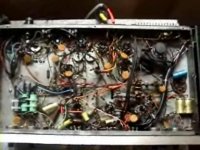 bell_0001.jpg35.7 KB · Views: 103
bell_0001.jpg35.7 KB · Views: 103 -
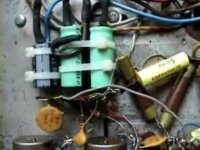 bell_0003.jpg30.7 KB · Views: 108
bell_0003.jpg30.7 KB · Views: 108 -
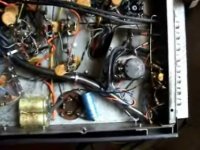 bell_0004.jpg33.8 KB · Views: 106
bell_0004.jpg33.8 KB · Views: 106 -
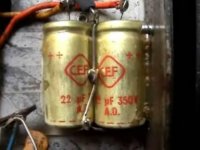 bell_0005.jpg24.6 KB · Views: 113
bell_0005.jpg24.6 KB · Views: 113 -
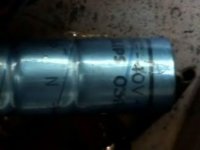 bell_0007.jpg15.4 KB · Views: 122
bell_0007.jpg15.4 KB · Views: 122 -
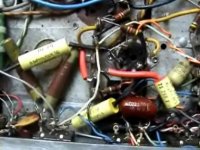 bell_0002.jpg37.6 KB · Views: 46
bell_0002.jpg37.6 KB · Views: 46 -
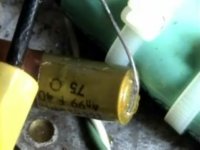 bell_0006.jpg20.3 KB · Views: 37
bell_0006.jpg20.3 KB · Views: 37 -
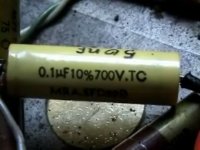 bell_0008.jpg26 KB · Views: 38
bell_0008.jpg26 KB · Views: 38 -
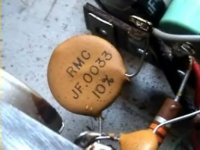 bell_0009.jpg26.1 KB · Views: 45
bell_0009.jpg26.1 KB · Views: 45
"the working voltage of parallel capacitor is equal to the lowest working voltage rating in the combination"
__________________
Yes, you are absolutely right John. I parallel/series caps and resistors all the time when I don't have a particular value in my jars o' fun.
Resistors are the same basically. The current rating is not more than the lowest rated one in the group. "A chain is only as strong as it's weakest link" type thing...
__________________
Yes, you are absolutely right John. I parallel/series caps and resistors all the time when I don't have a particular value in my jars o' fun.
Resistors are the same basically. The current rating is not more than the lowest rated one in the group. "A chain is only as strong as it's weakest link" type thing...
Thanks for your reply v4lve lover ,but , as you can see in the pictures , they already have been changed underneath :my question is :are those electrolytic replacement caps good enough ,or what brand should I take ,if you have an advice about that.
.The same for the other caps you can see in the photos ( for instance , the yellow ones marked 0.1µf..., (they look paper caps(Safco is the brand) ,( I'm a newbie ...)which should not be the best....
Any answers?
Many thanks
.The same for the other caps you can see in the photos ( for instance , the yellow ones marked 0.1µf..., (they look paper caps(Safco is the brand) ,( I'm a newbie ...)which should not be the best....
Any answers?
Many thanks
- Status
- This old topic is closed. If you want to reopen this topic, contact a moderator using the "Report Post" button.
- Home
- Design & Build
- Parts
- Capacitor Question...